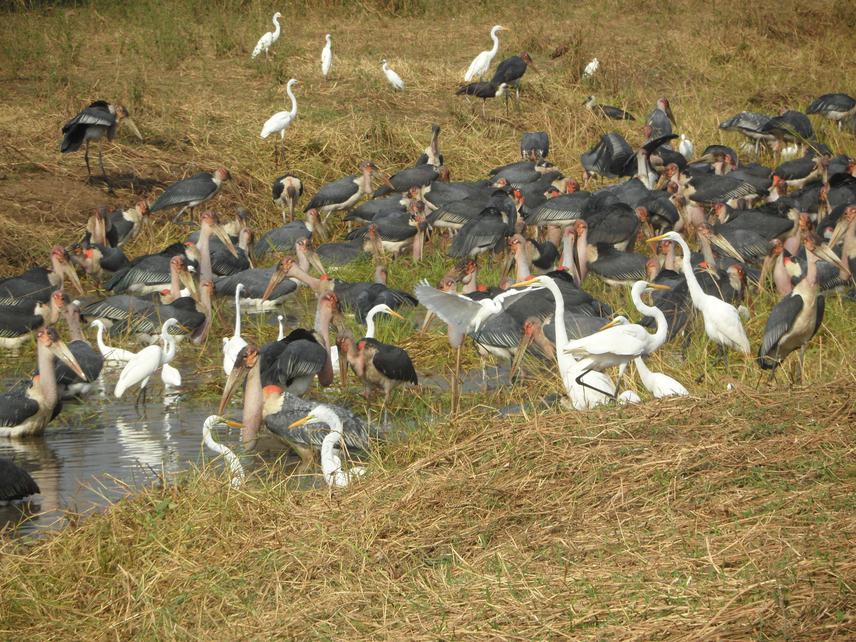Abebayehu Aticho
Other projects
10 Sep 2015
Improving Wattled Crane (Bugeranus carunculatus) Population through Community Based Conservation in Boye Wetland Complex, Jimma, Southwest Ethiopia
15 Nov 2016
Strengthening Community Capacity to Undertake Wattled Crane and its Habitat Conservation in Boye Wetland Complex, Jimma, Ethiopia
28 Feb 2018
Advance Community Based Conservation of Wattled Crane and Wetland Habitat in Jimma Zone, Southwestern Ethiopia
27 Oct 2021
Fostering Community-Based Wetland Management to Enrich Threatened Crane Species Conservation and Community Livelihood in Jimma, Ethiopia
Wattled Crane (WC) is listed as vulnerable species in IUCN. It is endemic to Africa (e.g., Botswana, Ethiopia, South Africa) and specialized to wetland habitats. Wetland degradations and losses caused fragmentation of existing populations and reduced population status. In Ethiopia, about 50% of WC populations are lost in past decades due to habitat degradations and losses, poor breeding and lack of community participation in conservation. Improving the capacity of local community and equipping them to undertake conservation action is key element of sustainable conservation. Therefore, this project is designed to:
• analyse wetland and river buffer areas to identify better management options that could potential contributes for the realization of conservation, socio-economic and ecosystem needs,
• wetland habitat management plan,
• provide support for rehabilitation of degraded wetland or river buffer area,
• enhance breeding habitat condition to realize successful breeding,
• empowers nature clubs participation in environmental protection issues.

Birds gathered in small wetland. © Aticho, 2020.
The project site is located in Jimma Zone southwestern part of Ethiopia. Jimma town is the capital and administrative center of the Zone and located 335 km away from Addis Ababa- the capital of Ethiopia. The Zone covers a total area of about 15568.58 km2. The population is 2486155 and population density 159.69 persons per km2 (CSA, 2007). The mean annual rainfall is 1749 mm; temperature is 11.5 - 27.1 0C and altitude 880 - 3340 meter above sea level.
The Zone has many water sources (e.g. rivers, intermittent streams, and wetlands). According to FAO (1984), wetlands of the project area are classified and grouped under the western highland wetlands, which is year-round evergreen and used for diverse socio-economic activities. Wetland habitats are public resources and openly accessed by all local community member. Because of this, in Ethiopia wetland habitats are converted to other land use types to provided farmland for landless peoples. Also, farmers who have land adjacent to wetlands convert them into other land use types.
Wetlands of this project area are habitat for over 36 bird species including endemic threatened, and vulnerable species (Mekonnen & Aticho, 2012). Among the bird species, wetland habitat specialized and global threatened WC has been using the wetlands for breeding, feeding and roosting. However, wetland habitat has been affected with several anthropogenic and environmental factors consequently, the life of birds particularly wetland specialized species at risk during the few past decades (Aticho et al., 2018).
In general, the purpose this project is to use global threatened magnificent wattled crane in the project area as flagship species to conserve the wetland ecosystems including fauna and flora diversity in Jimma area and draw scalable lessons that can be applied in other similar areas. Further, to ensure sustainable wetland ecosystem conservation practices through active local community participation and producing young conservationists.